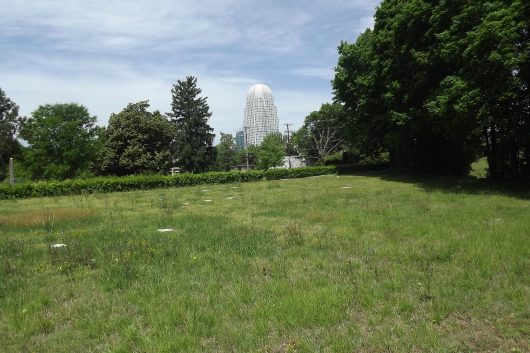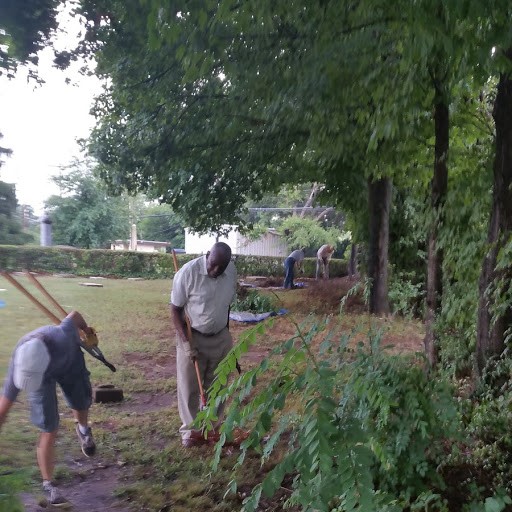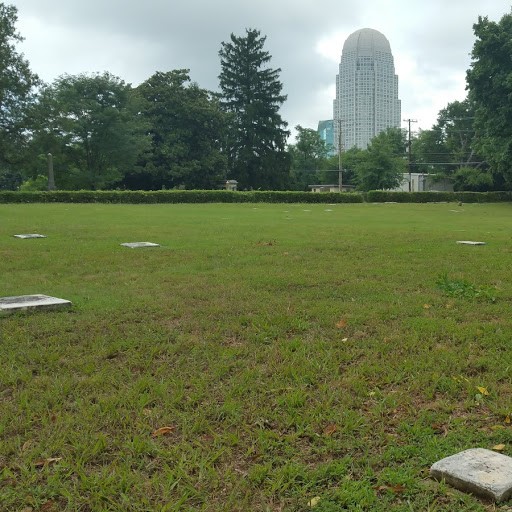The Salem Congregation office is open but we recommend calling ahead or emailing to confirm availability if you need to speak to a particular staff person.
Phone: 336-722-6504 Email: office@salemcongregation.org

The Salem Congregation office is open but we recommend calling ahead or emailing to confirm availability if you need to speak to a particular staff person.
Phone: 336-722-6504 Email: office@salemcongregation.org
Winston-Salem, N.C., July 21, 2018 — Salem Congregation has retained a graveyard mapping team to conduct a geophysical investigation to locate unmarked graves in the St. Philips Moravian Graveyard, Section 2, also referred to as the Second African-American Graveyard, near the intersection of Cemetery Street and Salem Avenue in Winston-Salem. The team, Seramur and Associates, of Boone, N.C., is scheduled to begin work July 31, 2018.
“This mapping will help confirm locations of graves on the site by using ground penetrating radar to locate disturbances in the soil that indicate grave locations,” said David Bergstone, director of facilities for Salem Congregation. “This non-invasive method uses electromagnetic pulses to identify differences in the subsurface geology. When complete, a plan of the entire site will indicate grave locations to help guide marking graves and protecting them from disturbance.”
While primary records note approximately 180 graves at the site, some are no longer marked. Further research has identified possibly 234 total burials, Bergstone noted.
“The Salem Congregation’s Graveyard Committee has been working to mark all the graves in the graveyard as part of ongoing improvements, which also call for new fencing and parking to improve access,” Bergstone said.
The first burials of enslaved African-Americans in this area of the graveyard date to 1859, after the St. Philips Church graveyard at S. Church Street was thought to be full. Established in 1822, St. Philips is the oldest African-American church building in North Carolina and one of the oldest in the country. In the 1960s, the congregation moved to Bon Air Avenue, in Winston-Salem.
“St. Philips Moravian Graveyard, Section #2,” was included in the 2016 revision of the Old Salem National Historic Landmark District designated by the National Park Service because of its significance to the African-American history in the United States. Initially, Moravian African-Americans were buried in the main God’s Acre graveyard. In 1816, burials were segregated and African-Americans were buried in the graveyard at the St. Philips Moravian Church, which is now interpreted as part of Old Salem Museum & Garden’s St. Philips Heritage Center.
Salem Congregation was organized in 1772 as the Congregation Council for the Moravian settlement of Salem in North Carolina. The Council, comprised of the Elders Conference and the Board of Trustees, attended to the spiritual and financial affairs of the community. Since the congregation was not incorporated, title to all of its land was held in trust by a church official known as the “Proprietor.”
The first burials of enslaved African-Americans in this area of the graveyard date to 1859, after the St. Philips Church graveyard at S. Church Street was thought to be full. Established in 1822, St. Philips is the oldest African-American church building in North Carolina and one of the oldest in the country. In the 1960s, the congregation moved to Bon Air Avenue, in Winston-Salem.
The incorporation of Salem Congregation occurred as the result of a change in the governance of the town of Salem. The Congregation, known as Moravians, was originally incorporated January 31, 1874 as The Congregation of United Brethren of Salem and Its Vicinity. In 1981, an amendment to the charter in changed the name of the corporation to Salem Congregation. The Salem Congregation owns and maintains property, including Salem Moravian Graveyard and both St. Philips Graveyards, which are shared by its 12 congregations.
Peggy Crouse, chair of the Graveyard Committee overseeing the project, explained that Moravians consider their graveyards to be “God’s Acre” in which bodies of loved ones are sown in faith as physical bodies to be raised as spiritual bodies.
“Likewise, our recumbent stones symbolize the democracy of death—making it impossible to distinguish between the graves based on wealth or life status,” she said. “Our goal is to make it impossible to distinguish between the God’s Acres that we care for.”
Salem Congregation is continually adding and updating information on the Salem Moravian Graveyard Page in an ongoing project to make the current records as complete as possible. Please be aware that information may periodically be updated.